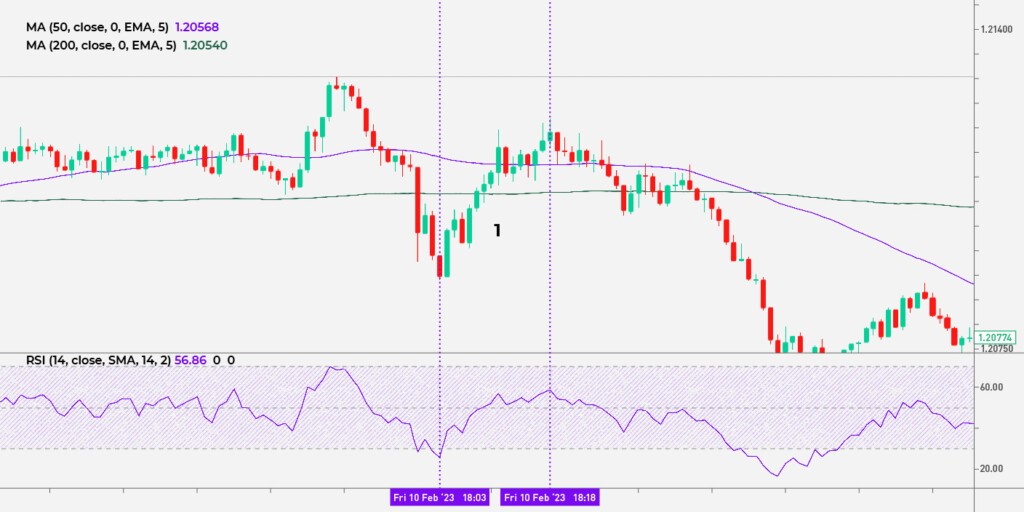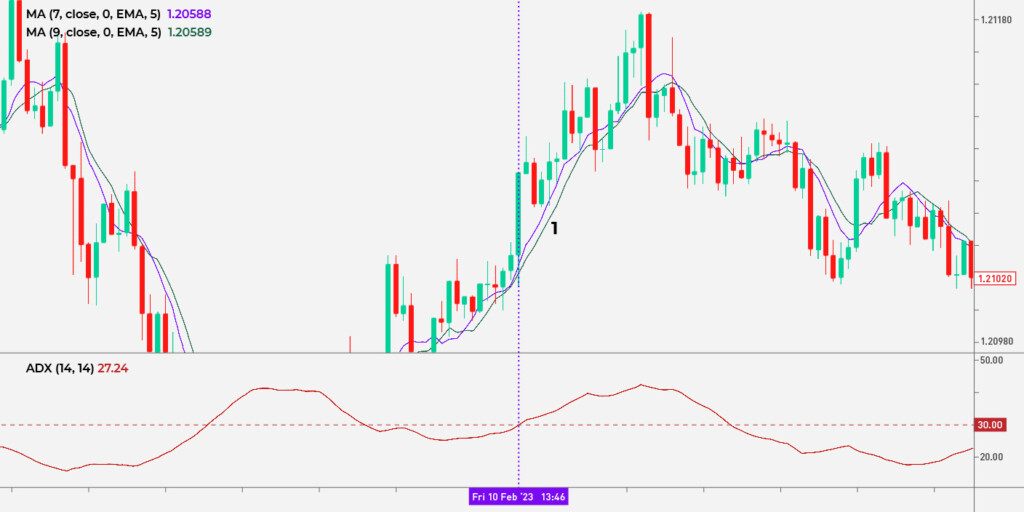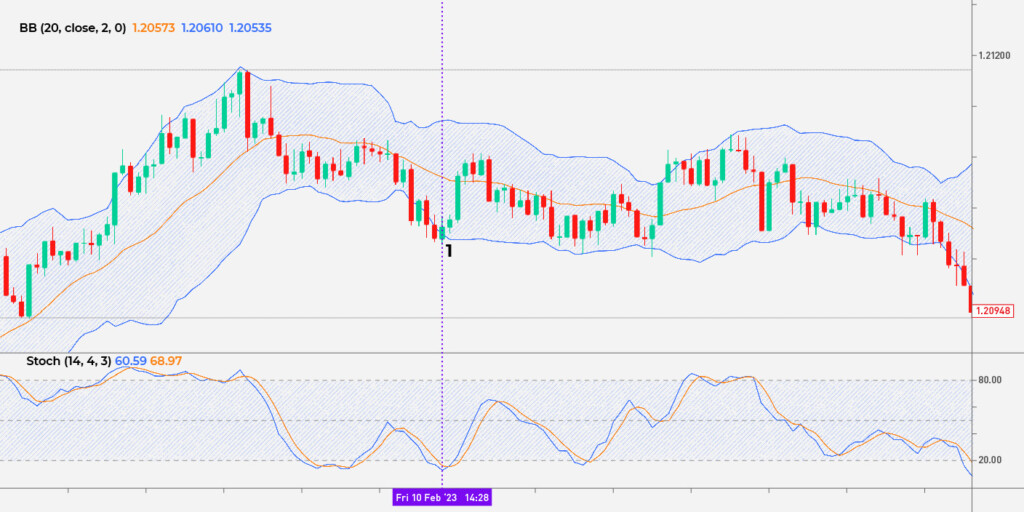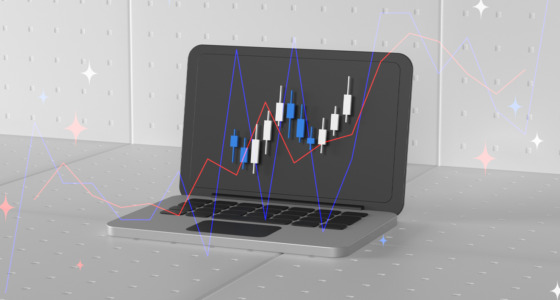

Fixed time trading, or FTT, is a concept that involves making a price prediction over a predetermined period, usually minutes or hours. Unlike standard trading, FTT allows traders to forecast whether a price rises or falls without specifying levels. The FTT concept can be applied to any market, including cryptocurrencies, forex, stocks, and commodities. If the forecast is correct, the trader receives a bonus. If it’s wrong, the trader loses only the deposited funds. This allows traders to limit risks and calculate potential losses. As fixed time trading is commonly applied in short-term timeframes, traders widely use various scalping strategies.
Could you imagine that scalpers (traders who use the scalping approach) may open over 100 trades over one trading day?
Strategy #1
It’s a widely used forex scalping strategy based on two of the most popular indicators – the birelative strength index (RSI) and the exponential moving average. One of its advantages is that a trader can use standard indicator settings – the 14 period for the RSI and the 50 and 200 periods for exponential moving averages (EMAs). This approach should be used on 1-minute to 5-minute timeframes.
Note: once you get the approach’s idea, you can change the indicator’s settings and try it on other timeframes.
The strategy allows for forecasting a rise and fall in a price:
- The price may rise (1) when the 50-period EMA rises above the 200-period EMA, the price stays below the longest EMA, and the RSI is in the oversold zone (below 30).
- The price may fall when the 50-period EMA falls below the 200-period EMA, the price stays above the longest EMA, and the RSI is in the overbought area (above 70).

A standard scalping strategy includes stop-loss and take-profit orders, which aren’t implemented during fixed time trading. Therefore, to be sure the price won’t turn around by the time your trade expires, you should measure the average degree of volatility.
Strategy #2
This is another scalping strategy with moving averages. It also includes the Average Directional Index (ADX) indicator. You may have noticed that many sampling strategies include moving averages even though they provide delayed signals and scalping requires fast decisions. You better use this approach when the price moves in a solid trend, as it may fail when it consolidates and moves in narrow ranges.
Again, you can use standard settings – 14 for ADX smoothing and 14 for DI length, a period of 7 for a short exponential moving average, and a period of 9 for a longer exponential moving average.
The theory says the strategy works on timeframes of up to 5 minutes. However, you can increase settings values and try it in longer-period charts.
The following criteria should be met to predict a rise and fall in a price:
- A price rise may occur when a 7-period EMA moves above the 9-period EMA, the price stays above the shortest moving average, the ADX indicator breaks above the 30 level, and the price retests the shortest EMA (1).
- A price fall may happen when the shortest EMA is below the longest one, the price stays below the shortest EMA, the ADX indicator crosses the 30 level from top to bottom, and the price retests the 7-period EMA.

As with the first strategy, you should determine average volatility and current trading volumes to be sure the price won’t reverse by the trade expiry.

Strategy #3
In the third scalping strategy, you can use the volatility indicator Bollinger Bands and momentum stochastic oscillator. A trader should determine normal price ranges and find conditions when it’s outside them.
The theory suggests traders use Bollinger Bands with a period of 20 and a standard deviation of 2 and the stochastic oscillator with %K of 14, %D smoothing of 3, and %K smoothing of 5.
According to the strategy:
- A price may rise (1) when it falls below the lower band of the Bollinger indicator but turns around and closes above it, with the stochastic oscillator being below 20 (oversold area).
- A price may fall when it rises above the upper band, turns around, and closes below it while the stochastic oscillator is above 80 (overbought area).

A trader should remember that the strategy should be applied to low timeframes.
Final thoughts
Scalping is a complicated trading approach. Although fixed time trading bears lower risks than standard trading, it can only be made safer by implementing wise scalping techniques. Before using scalping approaches in real trades, examine them on a demo account to develop your best scalping strategy.
Sources:
Scalping: Definition in Trading, How Strategy Is Used and Example, Investopedia
Scalping (Day Trading Technique), CFI








